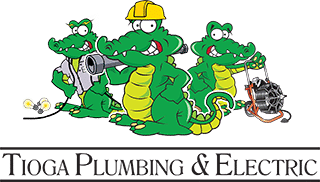
Battling Springtime Tree Roots With Help From Your Plumber
Plants, very much like people and animals, are ready to slough off the winter with increased activity in the spring. While you may have noticed more squirrels scurrying and more people out and about for a jog or walk, rest assured that beneath the ground, tree roots are behaving just as lively as they search for water and nutrients. The problem for property owners is that sometimes those prowling roots access underground pipes where they can wreak havoc with the plumbing system. Luckily, Tioga Plumbing & Electric can send a skilled plumbing technician to your location to deal with your tree root issue. We feature certified plumbing professionals who are highly trained and experienced in dealing with a wide range of issues, including tree root clearing, leak detection, and more.
Tree Roots in Spring
Many area homeowners experience tree root problems in spring when roots once again become highly active. During the winter, trees and their roots are still living, of course, but are largely dormant. As the warm weather heats up the soil, tree roots ‘wake up’ and begin to seek nourishment to support the tree during the upcoming growing season.
Underground pipes like sewer lines and water lines are perfectly safe from tree roots so long as they are in very good condition. If they’re older and have begun to develop pinpoint holes or cracks near the seams, the pipes become vulnerable to thread-like roots. The roots can sense the water and nutrients flowing through the pipes. If they can access those tiny entry points, they will.
Tree Roots in the Sewer Line
When tree roots get into your sewer line, you’re unlikely to notice immediately, but in time there will be signs–and these are signs you’ll need a plumber. Once tree roots get into the pipe, they will begin to absorb the water and nutrients that are found there. Sink water, bath water, and toilet water flow as wastewater from your plumbing system. The tree roots will access these materials on their way to the main sewer system.
As the tree roots ‘feed,’ they’ll grow in size. Their growth will disrupt the flow of wastewater through the sewer line. They can grow to actually clog the line and may even damage it further. If your sewer line develops a clog, you’ll need a professional to clear the pipe.
Signs of Tree Roots
You’ll likely notice many signs if your sewer system becomes clogged by tree roots. Symptoms of tree root infiltration include:
Gurgling Noises
The sound of gurgling noises is an ominous one. It’s an alert that a clog is forming somewhere in the plumbing system. If you hear a gurgling sound, the clog that’s forming could be located near a fixture like a sink or a toilet. However, if you hear gurgling in one room while someone is using a plumbing fixture in another, there’s a strong possibility that the clog that’s forming is in the sewer line.
Wastewater Backup
If water backs up into your home from more than one drain or when using various fixtures, the sewer line is likely harboring a clog. A powerful clog in the sewer line demands the experience of a trained plumbing pro.
Waterlogged Landscape
If your yard is soggy in the area where your sewer line runs, you could have a serious rupture that may be caused by tree roots. In this case, you’ll need a plumbing technician to assess the problem. After evaluating the condition of your pipe, we can recommend the ideal solution, which may include trenchless repair or more conventional replacement options.
Slow Drains
If your drains are slow, there’s a possibility that your sewer line has been infiltrated by tree roots. The sooner you call a trained professional, the better. Slow drains are a warning sign you shouldn’t ignore. If you have more than one slow drain, the problem is in your sewer line or near it. More than one slow drain is cause for concern, so be sure to contact a plumber from our team to investigate the line.
Tree Root Clog or Something Else?
Tree roots may be the cause of your slow drains or sewer line clog, or there might be some other reason for concern. That something else could be major sewer line damage. As tree roots grow, they can cause a major pipe rupture. The pipe will leak, but it can also collapse. Tree roots aren’t the only cause of sewer line damage. Sewer pipes can become corroded or brittle over time. As they age, they can become increasingly vulnerable to tree roots, but other debris that gets into the pipe can also lead to a clog that results in pipe damage.
The fact is many things can cause sewer line damage. Shifting grounds, pests, and even hard water buildup. If you are concerned about your sewer line and its condition, you can let one of our trained plumbing technicians evaluate it in order to recommend the ideal solution.
Contending with Springtime Tree Roots
If there are tree roots growing in your sewer line, you can contact us, and we’ll send a plumber to your home or commercial property. We can typically tell if there are roots in the line because we’ll pull them up with our auger. If there are roots, we’ll attach a cutter to the auger and cut the roots away. Then, they can pass through the sewer line and into the main sewer system. Our plumber will make sure the roots are clear so that your sewer line functions as it should again.
Call us to schedule a service appointment so we can assess your sewer line and make the ideal fix.
Our plumbing pros at Tioga Plumbing & Electric will arrive with everything needed to address the plumbing situation. We can clear out the tree roots, but if a more extensive solution is needed, we can make the appropriate repairs. We look forward to helping you maintain your plumbing system this spring and every season beyond.
See our most recent blog post on the topic here.
Check out our reviews here.
Photo By NK08gerd at iStock
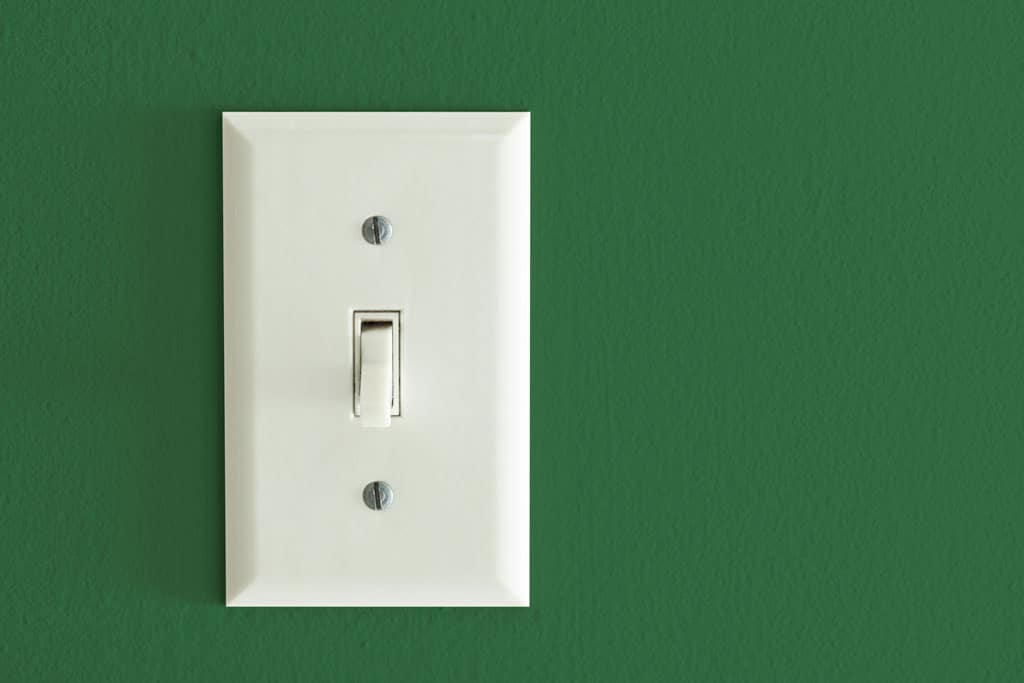
Why Is Your Light Switch Hot? An Electrician Answers Your Questions
Light switches are a part of every household. They allow us to control lights by controlling the flow of electricity. If your light switches in your home are hot or warm to the touch, this is a sign that too much power is running through it and must be addressed immediately. Failure to do so can lead to a severe electrical fire in your home. You must have a professional electrician replace the affected switches to ensure your home is safe. Here we have listed possible causes for a hot light switch.
Overloaded Switch
Like wall outlets, light switches are limited in how much power they can handle. Each switch has a different power level rating, and it may become hot if it is pulling too many amps. Most standard light switches can handle an electrical load of 15 amps. It could overload and cause a hot switch if connected with too many lights. What happens is that the circuit draws more electricity than the cable can handle. This makes the wires heat up and become hot or warm to the touch. This is dangerous as it can result in severe fires. If you discover a hot switch when you turn the lights on, it is time to call a licensed electrician to come and replace the old switch with a new one rated at more Amps.
Faulty Wiring
Faulty wiring is another reason that can cause your light switch to become hot. If there are loose or broken wires, electricity tends to flow forcefully. This issue can cause your light switch to create sparks, which can eventually cause a major fire risk. While it is normal for wiring to get warm when used for a long time, it should not become so hot that it is uncomfortable. It is optimal to seek the assistance of a professional to perform rewiring. They will first inspect your home’s electrical systems to determine the problem. They also know which light switches will work perfectly in your home. Additionally, detecting faulty wiring early will avoid the inconvenience of flickering lights. Plus, avoid inconsistent electrical performance and devastating fires.
Your Light Switch is Failing
Over time, light switches start to wear out. An older switch may not be able to handle high amperage, and the electrical contacts can emit sparks when you turn the switch on or off. The connections may sometimes not meet properly, sparking and making the light switch hot. If there is a popping sound, snap, or audible crackle when you flip the switch lever, it is clear that your switch is defective and needs replacing. The cheapest way to solve the problems is to hire a certified electrical contractor to check your light switch, and they will install new light switches in your home.
Dimmer Switches
Dimmer switches are light switches that control the brightness level in a room. They use semiconductors and other electrical components to brighten or dim the lights. These switches naturally produce heat compared to basic light switches but should not have much heat. If dimmer switches produce a lot of heat, they may be underloaded, overloaded, or control the wrong type of light. If you touch the dimmer switches and find them very hot, call a professional electrician for an inspection. They will replace the old dimmer switch with a compatible model or one that supports the type of load.
Could a Hot Light Switch Indicate the Presence of Other Electrical Issues in My Home?
A light switch that feels hot to touch could be one of the many signs suggesting a potentially more significant problem. There are chances of some other electrical problems in your home as well. Here are some of the related electrical issues to look out for:
• Flickering lights: This problem can happen if the wiring does not support the bulbs installed in your home. If the bulbs connected to a dimmer are sparkling, there is likely poor or loose wiring behind the switch, which causes the flickering. If you are concerned about flickering lights in your home, contact a professional electrician near you to diagnose the problem immediately.
• Discoloring on outlet covers: An outlet becomes discolored when the wiring fails or due to long-term overheating caused by the amount of current drawn. If you have an electrical outlet that does not work, it is time to call an electrical expert to perform an inspection and ensure no serious issues are present.
• Sparking at the outlet: if your electrical outlets are sparking, this can indicate a problem with the wiring behind the outlet. In some cases, these sparks can cause fire problems in your house. This happens when too much heat buildup in the electrical outlet causes the wire insulation to melt; the electrons may leap to the wrong area, causing a short circuit. This commonly happens to old electrical outlets. If a sparking outlet concerns you, do not hesitate to call an electrical expert near you.
• Tripped circuits: A circuit breaker usually trips when an electrical problem could damage the circuit. This is usually when a faulty component, a power surge, or excess current occurs. If you have a circuit breaker in your home that keeps tripping frequently, this could put your house in danger unless you call an expert to help with the issue.
Call Us for Electrical Repair Services
If you feel your light switch plastic casing is hot or there is a burning smell within your house, the issue should be addressed immediately. A skilled electrical expert should be able to upgrade or replace your light switch quickly. Contact our professionals at Tioga Plumbing & Electric for prompt service. We will inspect your electrical system and find out the problem. We specialize in every kind of electrical work, and we know precisely which light switches will work perfectly for your home. Call us to book an appointment if you need assistance with a malfunctioning electrical system.
See our most recent blog on this topic here.
Photo By powerofforever at iStock
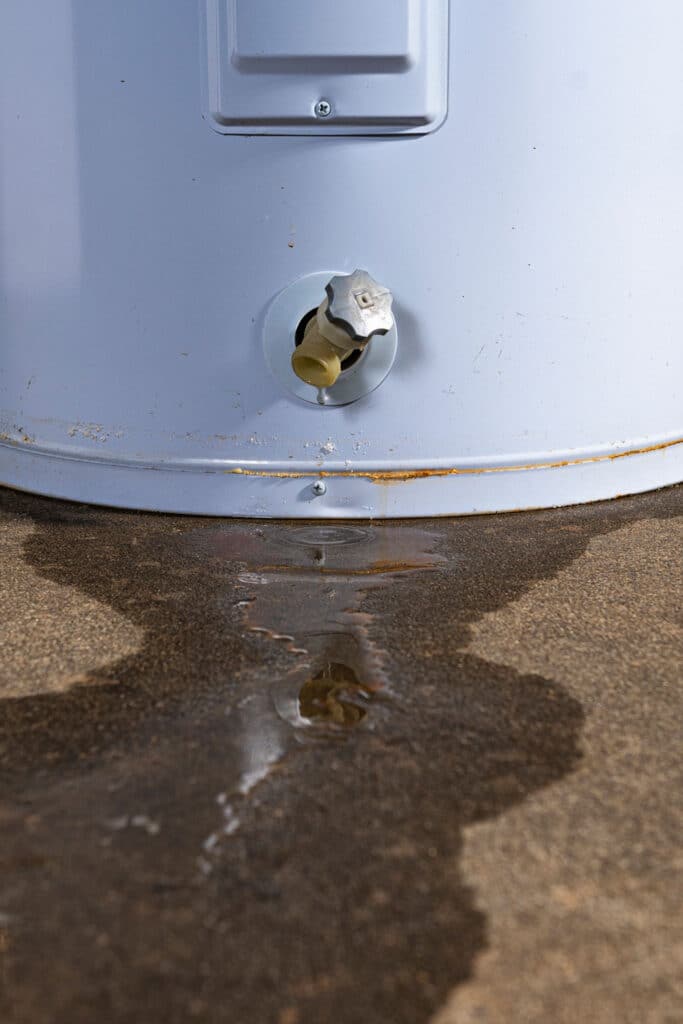
Is Your Water Heater Acting Up? Call A Water Heater Repair Professional
Every appliance in your home is designed to make your life easier, and it can be stressful when one stops functioning correctly. You can live without some appliances for a few days, such as the washer or dryer, because you can go to the laundromat. You can also go a few days without your dishwasher because you can wash the dishes by hand. You can’t live without some appliances, and the water heater is one of them.
The water entering your home fills the water tank, where it’s heated and stored, so you always have hot water. If the unit stops functioning correctly, it can affect the water temperature, your ability to use the hot water, and many other issues, depending on the problem.
If your water heater experiences any of the following problems, it’s best to call a plumber immediately.
No Hot Water
If you turn on the hot water and it comes out cold, you may need to hire a plumber specializing in water heater repair. Before you call a plumber, check a few things to avoid an unnecessary service call. If you have an electric unit, make sure there’s power going to the unit. If your unit runs on oil or propane, check the pilot to ensure it’s lit and make sure there’s oil in the tank. If you have a natural gas water heater, check your records to ensure your gas bills have been paid, and check another gas appliance to ensure there isn’t an outage.
If everything checks out, it’s time to call a plumber. A faulty heating element most commonly causes a lack of hot water. If the heating element doesn’t work, the water won’t heat up, and a plumber will inspect the unit to determine if this is the cause. They can fix or replace the heating element, allowing the unit to heat the water effectively.
If your unit is over ten years old, it may have reached its maximum lifespan and can no longer function correctly, and the water heater must be replaced.
The Water Doesn’t Get Hotter than Lukewarm
Does the water fail to get hotter than lukewarm, regardless of how long you let it run? If so, you may need to call a plumber. You should check the unit’s thermostat before you make the call so you don’t waste your time and money on a plumber. If the thermostat is set below 120 degrees, adjusting it should solve the problem. If the thermostat is set correctly, it’s time to call a plumber specializing in water heater repair.
If the thermostat isn’t working correctly, the unit won’t get the proper signal and can’t heat the water. A plumber will check the thermostat to ensure it functions correctly. If your unit has two heating elements, one may have failed, making it impossible for the other to heat the water to the desired temperature. Finally, if the unit is ten years old, it may not be able to function as efficiently as it once did, affecting the water temperature.
Nobody wants to take a lukewarm shower, and the temperature could affect how your hot water-based appliances perform, so it’s best to call a plumber immediately.
You Run Out of Hot Water Often
Do you often run out of hot water in the middle of a shower? If so, you should hire a plumber specializing in water heater repair. Running out of hot water is normal if too much is used quickly and the supply is depleted, but this shouldn’t happen often.
If someone recently moved into your house, your water heater may no longer be able to meet your family’s hot water demand. If this is what’s causing you to run out of hot water often, a plumber can replace the unit with a larger one.
A significant sediment buildup in the tank could also cause the problem. When large amounts accumulate, it will take up space meant for water storage, so your 50-gallon unit may only be able to hold 40 gallons, causing you to run out frequently.
Moisture or Water Pooling Around the Unit
The area around the water heater should always be dry, and moisture or water pooling around the unit requires a call to a plumber.
Moisture around the unit indicates a cracked or disconnected hose. Although this is a simple fix, you must address the problem immediately to prevent water damage and mold growth in the area.
Water pooling around the unit indicates a crack in the tank. You should turn off the water to the unit and call a plumber immediately. Unfortunately, the plumber can’t fix a leak in the tank, and you must replace the unit.
The Unit Makes a Clanging or Popping Sound
Water heaters are designed to run quietly, and if your unit makes a clanging or popping sound, you should call a plumber.
When large pieces of sediment build up in the tank, they will float around in the water, banging against the sides, causing a clanging sound. Ignoring the problem isn’t an option because the sediment can crack the tank, resulting in a more serious problem.
When sediment builds up at the bottom of the tank, water can get trapped underneath and will start to boil. This will cause a popping sound and should be addressed immediately. Ignoring the problem isn’t an option because the sediment can damage the heating element.
Unfortunately, the unit must be replaced if the plumber cannot flush the sediment.
Tioga Plumbing & Electric Can Help
If your water heater is acting up and you need to hire a plumber, look no further than Tioga Plumbing & Electric. We’re a full-service plumbing and electric service and have been serving customers in the DFW area since 1953.
Our plumbers are highly trained and have the knowledge and skill to handle the most challenging jobs in the industry. We also have someone on call 24 hours a day, 365 days a year, to provide emergency service.
If you need to schedule an appointment for water heater repair or any other plumbing service, give us a call at Tioga Plumbing & Electric or book online.
See our most recent blog on this topic here.
Photo By cmannphoto at iStock
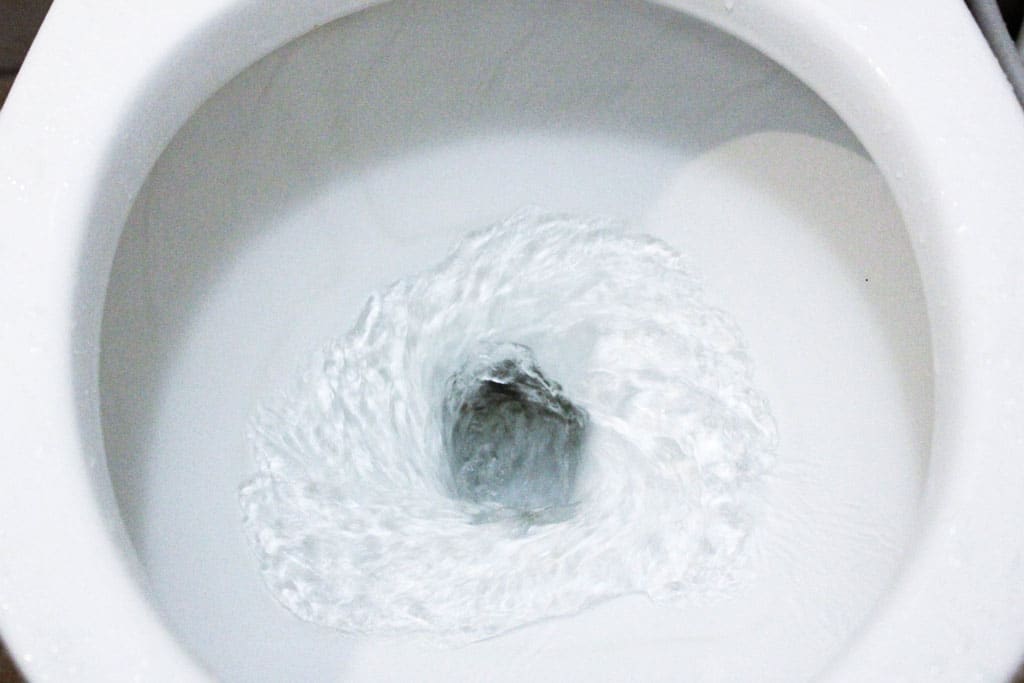
Different Types Of Toilet Flush Systems Explained By A Plumber
A toilet flush system is a special mechanism a toilet uses to pass water from the toilet tank into the toilet bowl. It consists of a tank that holds a certain amount of water, a fill valve for refilling the tank with water after every flush, and a flush valve for controlling the release of water into the bowl. There are different types of toilet flush systems, but they all have the same role of ensuring all the waste in the toilet bowl is taken down the septic system. The only difference is the flushing mechanism they use. Below are some of the common toilet flush systems explained by a plumber.
1. Gravity Flush System
Gravity flush toilets are the most common type found in households. They don’t rely on mechanical assistance to release water from the bowl. As the name suggests, a gravity flush toilet relies on gravity force to move water from the tank into the bowl to push waste down the toilet.
When you press the flush handle, the valve in the tank opens, enabling water to flow quickly into the bowl. As the water fills the bowl and reaches a certain level, a siphoning effect is created, pulling waste and water down through the trap and into the septic system. When the waste is flushed, air comes back to cut the siphon.
The good thing about a gravity flush toilet is that it doesn’t need external pressure to operate, making it a reliable option. If you have a gravity flush toilet and it is having flushing issues, call a plumber to fix it.
2. Pressure Assisted Toilet Flush
This is another type of flush system that uses compressed air to force water out of the tank and into the bowl. A pressure-assisted flush creates a powerful flush in toilets where a gravity flush system won’t be sufficient on its own. It has a secondary plastic tank inside the main tank to hold compressed air. This type of flush creates a powerful flush that is more effective at removing waste than a gravity flush system.
Professionals recommend toilets with a pressure-assisted flush system because they are efficient and water-saving. If your home has a lot of traffic, it is best to call a plumber to help you choose and install a toilet with a pressure-assisted flush system. Switching to a water-efficient toilet will help you save money on water bills in the long run.
3. Dual Flush Toilet Flush System
A dual flush system features two different flushing options; one for liquid waste and the other one for solid waste. A dual-flush system contains two buttons on top of the tank. The larger button is designed for the full flush, while the smaller one is for the partial flush. A partial flush uses about half the amount of water as the full flush. Toilets with a dual-flush system are designed to help you conserve water, and they are popular in most households because they save on water bills.
4. Washdown Toilet Flush System
This type uses a simple, gravity-driven flushing mechanism. When it comes to toilets with a washdown flush system, the bowl is designed with a flat bottom and a large trap way. When you flush the toilet, water from the tank rushes into the bowl, creating a powerful swirling motion that washes down all the waste.
Unlike other flushing systems that rely on pressure, vacuum, or siphoning effect to move waste, a washdown flush uses the force of the water to push the waste. Most toilets with a washdown flush system are reliable and less prone to clogs. In addition, it uses less water, making it cost-effective and environmentally friendly over time.
5. Single Flush System
In most older homes, single-flush toilets are commonly used. A single flush system allows you to use a single amount of water, whether flushing down solid or liquid waste. When you flush, all the water in the tank removes waste, and the refilling starts again. Single flush systems are easy to maintain and an excellent option for homeowners looking for a basic toilet design. However, it is good to note that they are not as water-efficient as other flushing systems, as they use the same amount of water per flush regardless of what you are flushing. If you need to save water, avoid this type of flush system. Consider hiring a plumber to help you install a toilet with a dual-flush system. Dual-flush toilets are water conservative and very efficient.
6. Siphon Flush System
This toilet flush system relies on siphon principles to clear waste from the toilet bowl. When you pull the handle, water from the tank quickly fills the toilet bowl. As the water level in the bowl rises, a siphoning effect is created, pulling all the waste and water into the drain.
A difference in pressure between the water in the bowl and the water in the drain creates the siphoning action that removes all the waste. As the water level in the bowl drops, the air is drawn in through the rim jets and breaks the siphon, allowing the tank to refill with water for the next flush. Toilets with a siphon flush system are known for their efficiency and ability to create a powerful flush that removes all the waste in the bowl.
Need Help Choosing the Best Toilet Flush System? Call Us!
When choosing a toilet flush system, it is good to consider the amount of water it uses and its noise level. Also, consider how easy it will be to clean and the maintenance costs. If you need assistance choosing the best toilet flush system, call us today at Tioga Plumbing & Electric. We will help you choose a water-efficient and reliable flush system so you can use your toilet comfortably. Also, if your current flush system is experiencing issues, we will fix it.
See our most recent blog on this topic here.
Photo By kanjana intaounwong at iStock
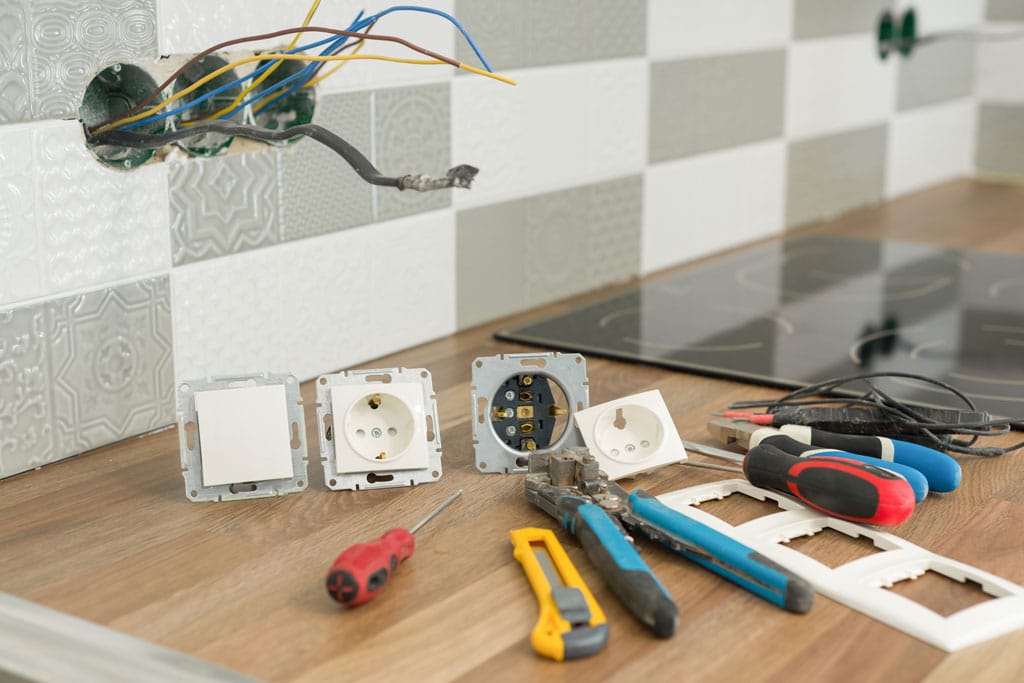
Benefits Of Hiring A Professional Electrical Service Provider
As a homeowner, it is okay to have the natural urge to try solving various problems around your house on your own, especially if you enjoy getting your hands dirty. However, there are limits. Indeed, it may not be safe for you and your family to handle some assignments on your own. For instance, when you have an electrical problem in your house, you should fight any temptation to fix it on your own, no matter how simple it might seem. This is because electrical problems can be more serious than they seem, and trying to fix them on your own could have devastating consequences. For instance, unless you are a professional electrician, DIY electrical solutions could expose you and your family to the risk of sustaining severe electrical injuries. Besides, poorly done electrical jobs could lead to fire accidents.
Therefore, instead of trying to fix electrical problems on your own, you need to have a professional electrical service provider on speed dial. If you have any doubts, below is a rundown of the benefits you can expect by hiring a professional electrician as opposed to trying DIY electrical solutions.
Stay Safe
Electrical jobs can involve a significant risk of accidents. Whether you have a damaged power socket that needs to be changed or you want to install a different kind of lighting fixture, the job is always going to be risky. Without the necessary skills, experience, tools, and safety gear for the job, you could end up getting seriously hurt. The good news is that you do not need to handle such assignments on your own. Instead, you can pass the possible risk of accidents to other people by simply hiring a professional electrical service provider to help you handle all electrical issues in your house, no matter how minor they might seem. In any case, professional electricians have adequate training experience, and they have everything it takes to handle all kinds of electrical issues without hurting themselves or putting other people in danger. Furthermore, these professionals prepare for possible accidents by getting adequately insured. Therefore, even if they accidentally sustain some injuries while working in your house, you will not be held financially liable for their injuries since their insurance will cover them.
Protect Your Home Insurance
Life is full of risks and surprises, and this explains why you probably have home insurance. The insurance is essentially meant to protect you against financial losses should your home suffer some significant damage as a result of a natural disaster, water damage, fire damage, smoke damage, and other risks. However, insurance companies expect policyholders to do their part in averting potential accidents. For instance, your insurance might require you to ensure that all home improvement projects that might put your home at risk of getting damaged are done by licensed professionals. If this is the case, trying to fix your electrical issues on your own might put you at loggerheads with your insurer and even cause you to lose the insurance policy. On the other hand, by ensuring that all your electrical issues are handled by a professional electrical service provider, you can effectively protect your home insurance policy and consequently remain in your insurance company’s good books.
Protect Your Warranties
Your electrical system is quite valuable. This explains why some of its components come with warranties. Indeed, if some of its components are relatively new, there is a good chance that you have some valid warranties. With a warranty, you might be entitled to free repairs or even replacements should your electrical system develop some problems within a given time. However, it is important to note that the validity of such warranties is not without conditions. For instance, the warranties might require you to ensure that all your electrical installation and repair jobs are handled by licensed electricians. With such a provision, you might end up voiding your warranty should you decide to try DIY electrical solutions. In other words, choosing to fix your electrical problems on your own instead of calling a professional electrician could cause you to forfeit all the rights and privileges your warranties afford you. On the other hand, calling a professional electrician every time you have an electrical problem in your house will go a long way in helping you keep your warranties valid.
Save Time and Money
Considering the importance of your home’s electrical system, most electrical issues you will run into will need to be addressed urgently. Therefore, you may feel like calling a professional is going to take too long. As a result, you might think that DIY electrical solutions could save you time. However, in reality, DIY electrical jobs are likely to take much longer than you think. This is because, in most cases, electrical problems are more complex than they seem. Therefore, what you initially thought would take a few minutes might end up taking hours or even days.
Similarly, you may think that you are going to save some money by deciding to fix electrical issues on your own. However, this may not be the case. Indeed, DIY electrical solutions may not be cheap. For instance, even after trying your best shot at trying to fix a given electrical issue, you may end up failing to fix it decisively, meaning that you might end up having to spend more money hiring a professional in the end.
On the other hand, you can save a lot of money and time by calling a professional electrical service from the word go. This is because professionals have everything it takes to handle any electrical issue in the most efficient way possible.
The Bottom Line
As you can see, when you have an electrical issue in your house, it is important to ensure that it is handled by a professional electrician. If you are looking for a reliable electrician near you, Tioga Plumbing & Electric is an excellent choice. Feel free to get in touch with us for more information about our company and services.
See our most recent blog on this topic here.
Photo By Valeriy_G at iStock
Check out this tip!

